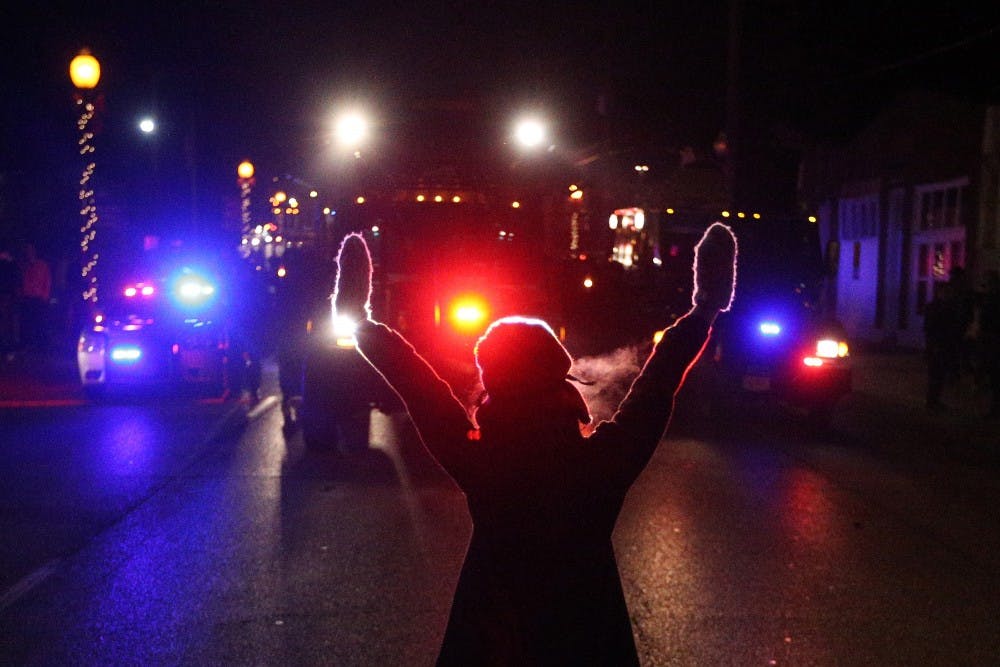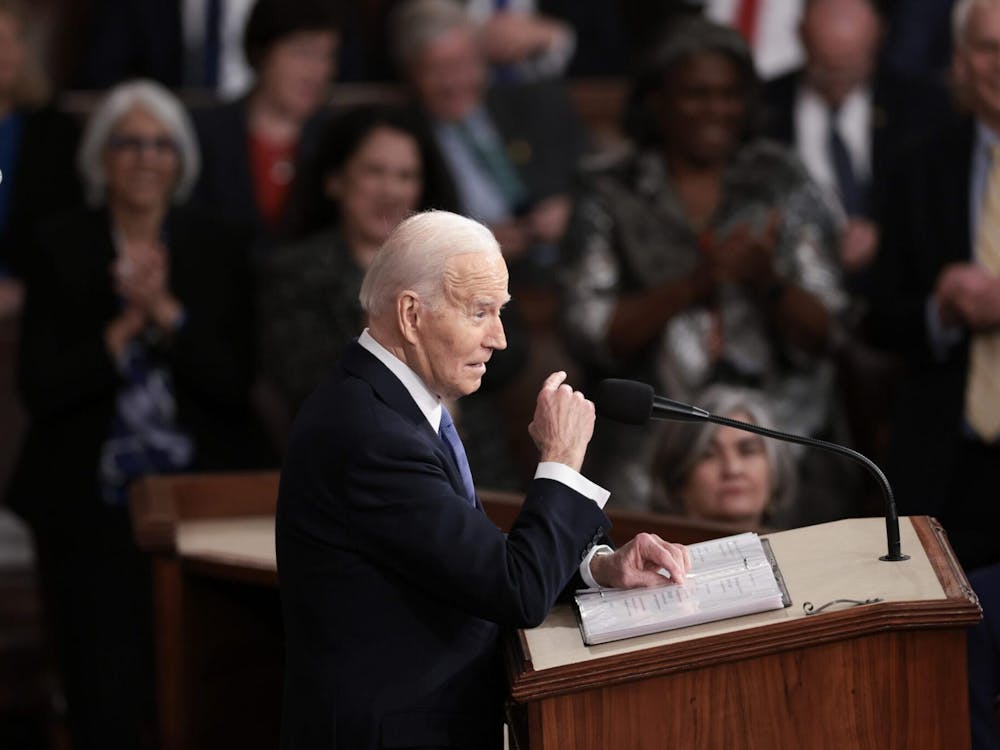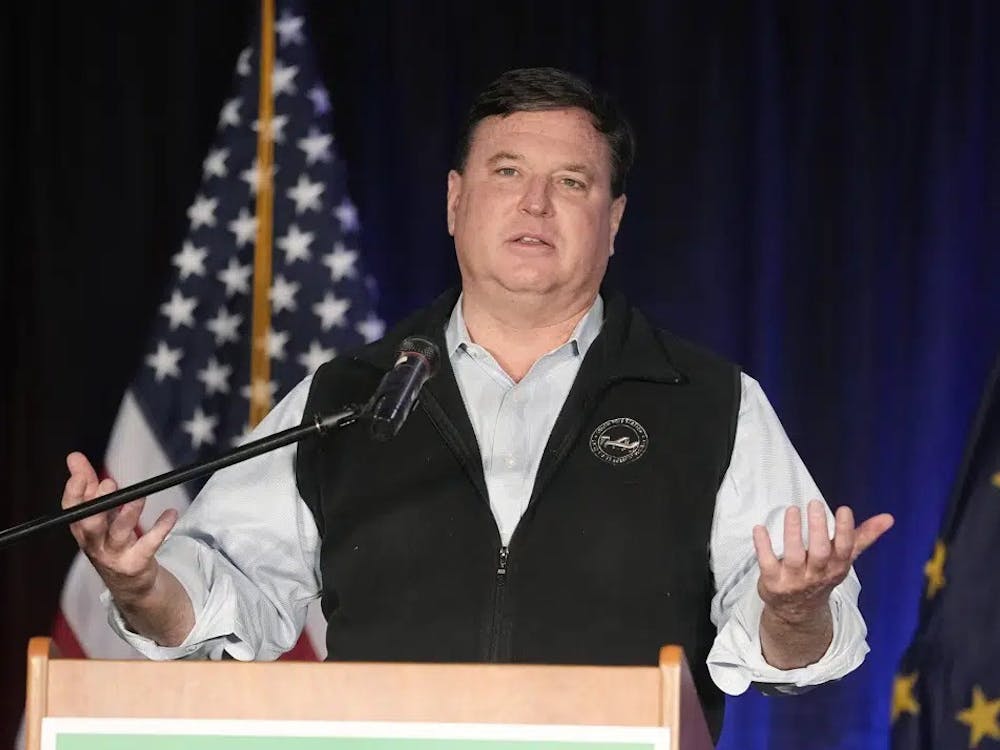The officer who fatally shot 18-year-old Michael Brown resigned Saturday from the police department in Ferguson, Mo., where protests continued but were far more muted than the violence sparked by a grand jury’s decision not to indict the officer earlier in the week.
Here’s a look at the latest developments:
Officer's Resignation
An attorney for Darren Wilson, the Ferguson police officer who killed Brown, said Saturday that Wilson had resigned effective immediately. Wilson told the St. Louis Dispatch he decided to step down after the police department received threats of violence if he stayed on the force, saying: “I’m not willing to let someone else get hurt because of me.”
Wilson, 28, had been an officer with the department for less than three years.
He won’t receive any further pay or benefits, and he and the city have cut their ties, Mayor James Knowles told reporters a day after Wilson tendered his resignation.
Protests Ongoing
More than 100 protesters were chanting outside Ferguson police headquarters Saturday night, and many seemed unmoved by Wilson’s resignation. Several merely shrugged their shoulders when asked what they thought. One protester, Rick Campbell, said he didn’t care about the resignation, saying: “I’ve been protesting out here since August.”
VIDEO: Black Student Association organizes moment of silence, prayer for Michael Brown
Protesters also started a 120-mile march from Ferguson to Gov. Jay Nixon’s mansion in Jefferson City. Organized by the NAACP, the march is expected to take seven days, with participants calling for new Ferguson police leadership and police reforms nationwide.
Demonstrators turned their focus to disrupting commerce on Friday, one of the biggest shopping days of the year, by holding numerous protests in several U.S. cities. Authorities temporarily closed three large shopping malls in suburban St. Louis following protests there, while about 200 people demonstrated along Chicago’s popular Magnificent Mile shopping district. Eleven people arrested at a mall in Raleigh, N.C.
Numerous storefronts in the Ferguson area still have their windows covered with plywood after the looting and violence in the immediate aftermath of the grand jury announcement Monday. But many merchants added spray-painted messages indicating that they were open.
Families of Brown, Martin Meet
Brown’s father, Michael Brown Sr., attended a prayer vigil Friday night in Miami Gardens, Fla. He met with Sybrina Fulton and Tracy Martin, whose 17-year-old son Trayvon Martin was killed in 2012 by a neighborhood watch volunteer.
Tracy Martin told Miami television station WFOR he offered Michael Brown Sr. encouragement and told him “God has his hands on the situation, and he’s gonna be OK.”
The vigil was part of the annual Gospel Explosion Concert hosted by rapper Flo Rida.
The Case
Brown, who was black, was unarmed when he was killed by Wilson, who is white, on Aug. 9 following a confrontation in a Ferguson street. Some witnesses said Brown had his hands up when Wilson shot him. Wilson told a grand jury that investigated the case that he feared for his life when Brown hit him and reached for his gun.
The shooting stirred racial tensions and led to numerous protests in Ferguson, a predominantly black community patrolled by a mostly white police force. A grand jury was assembled to investigate the shooting, and its nine white and three black members spent three months hearing more than 70 hours of testimony from 60 witnesses. Their decision not to indict Wilson was announced Monday night, prompting violent protests and looting that resulted in at least a dozen commercial buildings being destroyed.
The Jurors
The grand jury responsible for reviewing the fatal shooting of Michael Brown faced “an awesome burden” and “an awful lot of work.”
So said St. Louis County Prosecutor Bob McCulloch, addressing jurors when they convened Aug. 20, not long after Brown’s death touched off riots, looting and repeated clashes between protesters and heavily armored police. Ninety-seven days later, those jurors decided not to indict white Ferguson officer Darren Wilson for the death of the black 18-year-old.
Their reasoning was not explained, because Missouri law keeps the deliberations of grand jurors confidential. But in an unusual move, McCulloch released thousands of pages of testimony that jurors heard, plus more than 250 photos and 25 television news videos.
The materials reveal that some jurors raised concerns about their personal safety as they drew close to a decision, and that jurors not only listened to, but questioned, the dozens of witnesses that appeared before them.
What's Next
The U.S. Justice Department has its own investigation into possible civil rights violations that could result in federal charges for Wilson, but investigators would need to satisfy a rigorous standard of proof. The federal agency also has launched a broad investigation into the Ferguson Police Department.





